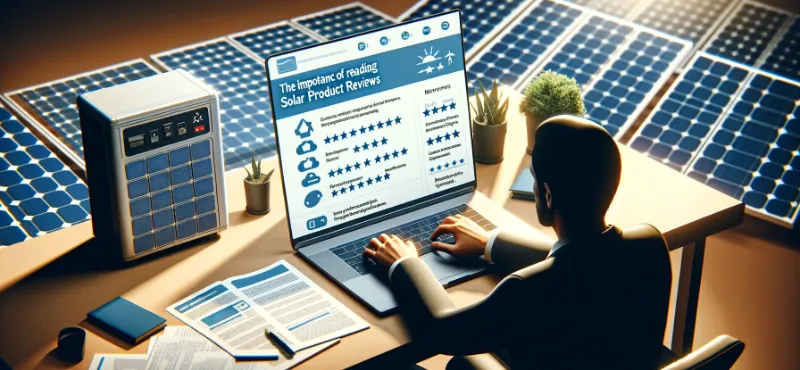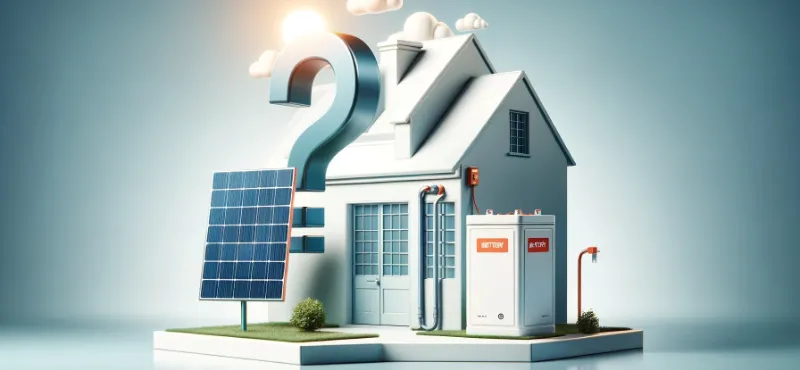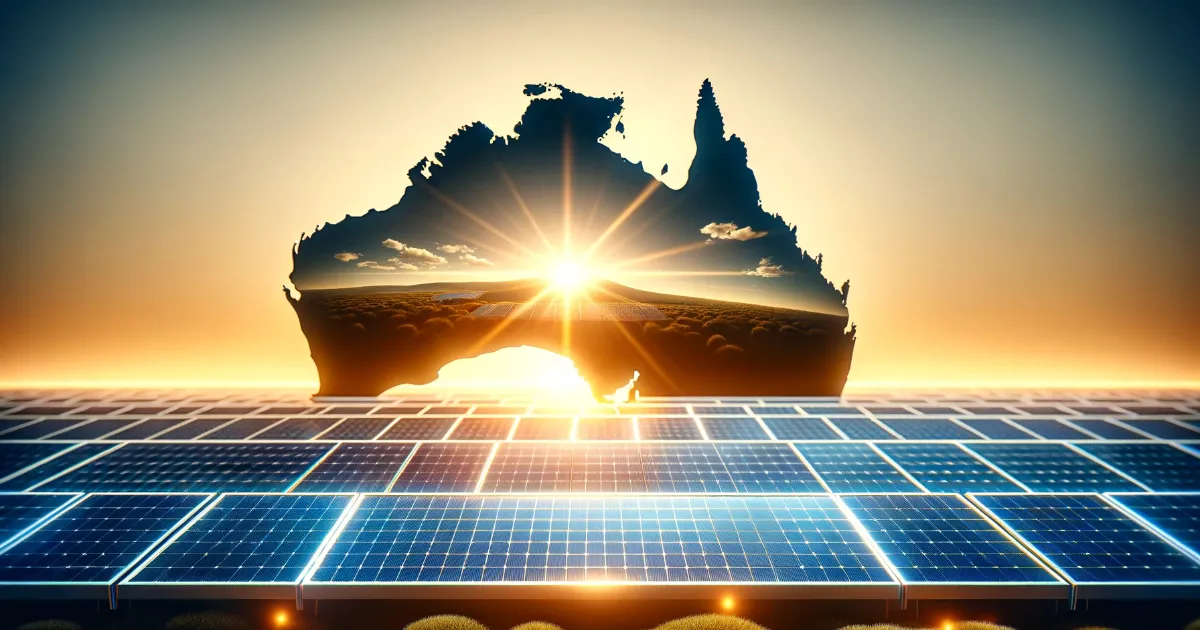Investing in a solar power system is a significant stride towards energy autonomy and ecological sustainability, particularly in Australia, where homeowners grapple with some of the highest electricity costs worldwide. Solar energy offers a practical solution to mitigate these expenses. However, the decision to install a solar system demands meticulous consideration to ensure it fulfils your energy requirements and delivers long-term financial benefits.
Embracing solar power entails assuming greater control and responsibility over your home's energy supply. Unlike traditional grid reliance, solar system owners must be prepared for potential maintenance or repair needs. While the solar setup offers independence from grid outages, it also introduces unique challenges. In the event of a system issue, prompt technical assistance may be required. Warranty terms vary, and some repairs might incur additional costs. It's essential to weigh these considerations to fully appreciate the responsibilities accompanying solar energy adoption.
Assessing Your Solar Energy Needs
Begin your solar journey by evaluating your household's energy consumption. Analyse your electricity bills from the past year to understand your monthly energy usage. This analysis will guide you in choosing a solar power system of appropriate size and capacity to meet your energy needs.
- Gather Electricity Bills: Collect your electricity bills for the past year. This historical data provides insight into your household's energy usage patterns.
- Monthly Energy Usage Analysis: Examine each bill to determine your monthly energy consumption, typically measured in kilowatt-hours (kWh). Pay attention to variations across seasons or specific months where usage might spike, such as during summer or winter.
- Identify Peak Usage Periods: Identify times of high energy use. This helps in understanding whether your energy consumption is consistent throughout the year or if there are peak periods.
- Calculate Average Energy Usage: Add up your monthly energy usage for the year and divide by 12 to get an average monthly usage. This average gives a baseline for the size of the solar system you need.
- Evaluate Energy Use Patterns: Assess when you use most electricity – during the day or night. Solar systems generate power during the day, so high daytime usage can maximise the benefit of a solar system.
- Future Energy Needs: Consider any upcoming changes that might affect your energy usage, like adding an electric vehicle, home renovations, or changes in family size.
- Consultation and System Sizing: With your energy consumption data, consult a solar energy expert to determine the most suitable size and type of solar system. They will assess your average monthly kWh usage, peak sunlight hours in your area, and potential changes in energy consumption to recommend a system size that meets your needs effectively. In Australia, the average residential solar system size is 9.3 kW as of the second quarter of 2023, but the system size should be tailored to your specific requirements.
By meticulously assessing your energy needs, you ensure that your solar power system is well-spent and appropriately sized, leading to optimal cost-effectiveness and energy efficiency.
Solar and Battery Estimator:
Find out your future electricity costs with the use of solar energy, with an added option for battery storage. Understand how seasonal changes and local weather patterns influence your savings. Assess the total financial return of your investment, and separately evaluate the impact of batteries and solar panels on your savings, aiding in your decision about the feasibility of battery installation.
Understanding the Three Main Types of Solar Power Systems
1. Grid Connect Systems
Grid-connected solar systems are linked to the public electricity grid and do not typically include battery storage.
- Less expensive than other types due to no battery storage.
- Excess power can be fed back into the grid, potentially earning feed-in tariffs.
- Reliant on the grid; no power during grid outages.
- No energy storage for use during non-sunny periods.
2. Hybrid Systems
Hybrid Systems combine the features of grid-connected systems with battery storage.
- Ability to store excess power for use when solar generation is low.
- Provides power during grid outages.
- More expensive due to the inclusion of batteries.
- Some batteries may require maintenance and eventual replacement.
3. Off Grid Systems
Off-grid systems are completely disconnected from the public electricity grid and rely solely on solar panels and batteries.
- Complete independence from the grid.
- Ideal for remote locations without grid access.
- Most expensive option due to large battery and backup generator requirements.
- Requires careful energy management to avoid depleting stored power.
Each system type offers unique benefits and challenges, making the choice dependent on individual circumstances, budget, and energy needs.
Research and Brand Evaluation

When selecting solar panels, inverters, or batteries, it's vital to refer to the Clean Energy Council's (CEC) approved product lists, which include items meeting Australian Standards. The CEC updates its PV Module requirements to align with the IEC 61215 Standards. From 1 October 2024, products not adhering to these standards won't be CEC-approved. Inverters and power conversion equipment, as well as PV modules, are listed by the CEC after rigorous testing and approval. The CEC also lists approved batteries, which are crucial for solar systems with storage options. Fees associated with the CEC's Product Assurance Program, product recalls, and the testing process are essential for consumer awareness. Additionally, an independent panel reviews appeals against product listing decisions. Choosing from the CEC's lists ensures compliance with Australian standards and offers assurance in terms of safety, efficiency, and reliability. It's advised to review the terms for product listing on the CEC's Approved Product Lists before making a purchase decision.
The Importance of Reading Solar Product Reviews
In addition to consulting the Clean Energy Council's (CEC) approved product lists, it is equally important to delve into consumer reviews and expert analyses of solar products. Reviews can provide real-world insights into the performance and durability of solar panels, inverters, and batteries. They often highlight practical aspects not covered in standard specifications, such as ease of installation, customer service experiences, and long-term reliability. Reading reviews from multiple sources helps in forming a well-rounded understanding of each product's strengths and potential shortcomings. This comprehensive approach ensures you are well-informed, leading to a more satisfactory investment in your solar power system.
Panel Types and Efficiency
Solar Photovoltaic (PV) technology has evolved significantly, offering a variety of panel types, each with unique characteristics and efficiencies. In Australia, the primary options available are monocrystalline and polycrystalline panels.
Monocrystalline Solar Panels are often regarded as a premium choice within the solar PV market. They are one of the oldest types of solar panels and are more costly to produce. They offer the highest efficiency, typically achieving 15-20% conversion efficiency. Made from single crystals of ultra-pure silicon, these panels are known for their high performance. They are ideal for situations where space is at a premium.
Polycrystalline Solar Panels (also known as multicrystalline), in contrast, are manufactured from silicon in a slightly less pure form. These panels are cast into blocks and sawn into square wafers, giving them a distinct appearance with visibly individual crystals. While slightly less efficient than monocrystalline cells, polycrystalline panels effectively utilise space on the panel, offering an almost identical performance to their monocrystalline counterparts. They present a cost-effective solution with very similar performance and degradation profiles compared to monocrystalline panels.
Thin Film Solar Panels, another type of solar panel technology, uses a different manufacturing process where a film containing silicon is applied to a surface. However, in the Australian context, thin film panels have become largely obsolete for residential use. They were once a cheaper alternative, but due to the superior price-performance ratio of mono and polycrystalline panels, thin film panels have phased out in the Australian market.
In summary, when choosing solar panels in Australia, the decision between monocrystalline and polycrystalline largely comes down to specific needs, budgets, and preferences in aesthetics, as their performance is comparably effective.
Installation and Mounting
Ensure the solar panel mounting system is engineered for your specific geographical conditions, primarily if you reside in cyclone-prone areas. Quality mounting systems should be wind-certified to withstand extreme weather conditions. Of course, any qualified installer worth their salt should be able to ensure the panels are mounted correctly and to local standards.
Warranty and Reliability
When selecting solar panels, the warranty period is a crucial factor. Opt for solar panels from reputable manufacturers offering substantial warranties, typically around 25 years. This not only ensures longevity but also reflects the manufacturer's confidence in their product. Remember, the effectiveness of a warranty is contingent on the manufacturer's ongoing operation in Australia.
Cost Considerations and Government Incentives
The cost of solar power systems varies, influenced by factors like system size and panel brand. While it's tempting to choose cheaper options, they might lead to compromised equipment quality and installation standards. Additionally, explore government incentives available for solar power installations, including solar rebates and feed-in tariffs, which can significantly offset initial costs.
Understanding Solar Rebates and Feed-in Tariffs
Solar Rebates are government-sponsored financial incentives that reduce the upfront cost of installing a solar power system. They are typically offered as a discount or partial refund on the purchase price of the solar system.
Feed-in Tariffs, on the other hand, are ongoing incentives. They involve payment to homeowners for the surplus electricity generated by their solar system and fed back into the power grid. The rate paid per kilowatt-hour (kWh) for this excess electricity can vary depending on government policies and energy providers.
Both incentives aim to encourage the adoption of solar power by making it more affordable and financially beneficial for homeowners.
Should You Install Battery Storage?

The Role of Battery Storage in Solar Systems
Battery storage in solar systems allows for the retention of excess solar energy generated during peak sun hours to be used later when solar generation is low, such as during night-time or cloudy days. This enhances energy autonomy and provides backup during power outages, making solar systems more versatile and reliable.
Impact on System Payback
As of late 2023, while battery storage adds significant value in terms of energy independence, it is still a considerable financial investment. A typical battery storage unit of around 10 kWh may cost approximately $10,000. It could take around 15 years to pay for itself, often outlasting its warranty period, which is usually 10 years. This investment needs to be compared to alternative uses of the same funds, such as paying off debts or investing.
Industry Growth and Economics
The growth of the battery industry is being significantly driven by the electric vehicle market, using similar technologies. This means the development and advancement in batteries are more than just reliant on the residential solar storage market.
Energy Prices and Feed-in Tariffs
The economics of battery storage can be influenced by rising energy prices, which make storing solar energy more valuable. However, as grid electricity prices increase, feed-in tariffs - the rate paid for exporting excess solar energy to the grid - may also rise, potentially impacting the financial advantage of storing energy in batteries.
Cost-Effectiveness and Future Trends
The cost-effectiveness of batteries also depends on the comparative cost of using stored energy versus buying from the grid. For example, suppose the cost per kWh of using stored energy equals the cost of grid electricity. In that case, there may be no financial savings. However, in regions with higher grid electricity prices, batteries can offer savings.
Experts suggest not waiting for battery prices to drop before going solar. Installing solar panels first and adding batteries later when they become more economical is a viable strategy. This approach avoids high electricity bills in the interim and leverages the declining cost trend of battery storage over time. Batteries can be easily integrated into existing solar systems through a method called AC coupling.
In summary, while battery storage provides significant benefits in terms of energy independence and blackout protection, its current financial return may not be compelling for all. The decision to include battery storage should consider the individual's specific circumstances, future trends in battery pricing, and the evolving dynamics of the energy market.
Solar Inverters
Solar Inverters play a pivotal role in a solar power system by converting the DC (Direct Current) electricity generated by solar panels into AC (Alternating Current) electricity, suitable for home use and feeding into the grid. The efficiency of an inverter is critical as it directly affects the amount of usable power generated by the system. Choosing a high-quality inverter from a reputable brand ensures maximum efficiency, reliability, and a longer lifespan, ultimately influencing the system's payback period and overall performance.
Solar Power System Maintenance Requirements

Understand the maintenance needs of your solar power system. Regular maintenance and inspections by a trained and fully qualified professional is essential to ensure optimal performance and system longevity.
Why Maintenance is Needed
Solar systems, like any other mechanical systems, require regular maintenance. The panels are exposed to various weather conditions, which can cause wear and tear over time. Issues such as deterioration of the DC isolator casing due to weather exposure can pose risks like fire hazards. Regular maintenance helps identify and rectify such issues early on.
Frequency of Servicing
It's recommended to service your solar panels at least once every two years to ensure they are operating efficiently and safely. The Clean Energy Council suggests additional inspections if any issues arise, indicating that a proactive approach to maintenance is crucial for the system's well-being.
Qualified Service Professionals
Servicing should be performed by a licensed A-Grade electrician, preferably accredited by the Clean Energy Council. These professionals are trained to safely diagnose and fix any issues. It's important to note that using unqualified service providers, such as 'solar cleaners', might pose safety risks or void your warranty.
Cleaning Vs. Servicing
Cleaning involves removing surface debris from the panels, which can be done by the homeowner using simple methods like spraying with a hose. However, servicing is more comprehensive, including detailed electrical testing and thorough visual inspections of the equipment and cabling. This professional servicing ensures that all parts of the system are functioning correctly and safely.
Additional System Checks
- Anti-Islanding Check: This is crucial for ensuring that your inverter safely disconnects from the electricity grid during a blackout. Some electricity distributors require this test to be conducted annually. It can be done by a Clean Energy Council accredited solar installer.
- Regular Inverter Checks: These are part of professional maintenance and include inspections for correct operation, as well as ensuring the heatsinks and ventilation grills are clean. Homeowners can perform basic upkeep like keeping the inverter free of dirt and looking out for warning codes or error lights on the display.
In summary, regular maintenance, conducted by qualified professionals, is essential for the optimal performance and safety of your solar power system. It involves routine inspections, cleaning, and servicing, including specific checks like the anti-islanding test for inverters. Adhering to a maintenance schedule not only extends the lifespan of your system but also ensures it operates at peak efficiency.
Avoiding High-Pressure Sales Tactics
Exercise caution against high-pressure sales tactics prevalent in the solar industry. Take your time to decide and seek quotes from accredited installers certified by organisations like the Clean Energy Council in Australia.
Get Multiple Solar Quotes
Dont hold back, most of the solar quote services online are totally free and without any obligation. Obtain several solar quotes from experienced installers to compare prices and services. A well-installed solar system should offer a balance of quality, efficiency, and cost-effectiveness.
Solar Power System Prices in 2024
| System Size in kW | National Average Prices |
|---|---|
| 5kW | $4,000 to $8,500 |
| 6.6kW | $5,000 to $9,500 |
| 7kW | $6,000 to $10,500 |
| 8kW | $7,000 to $11,500 |
| 10kW | $7,500 to $13,500 |

